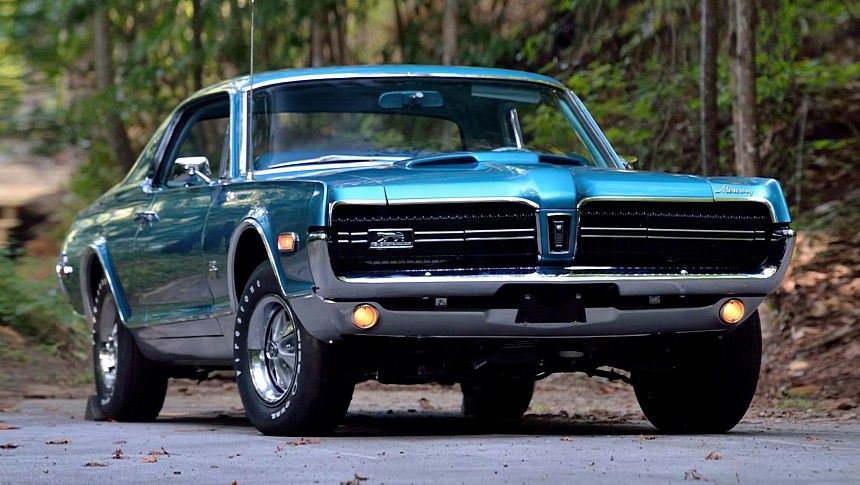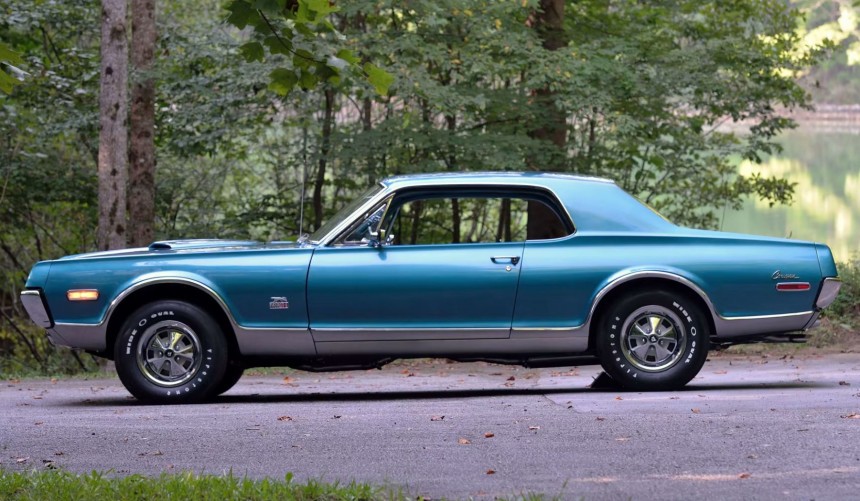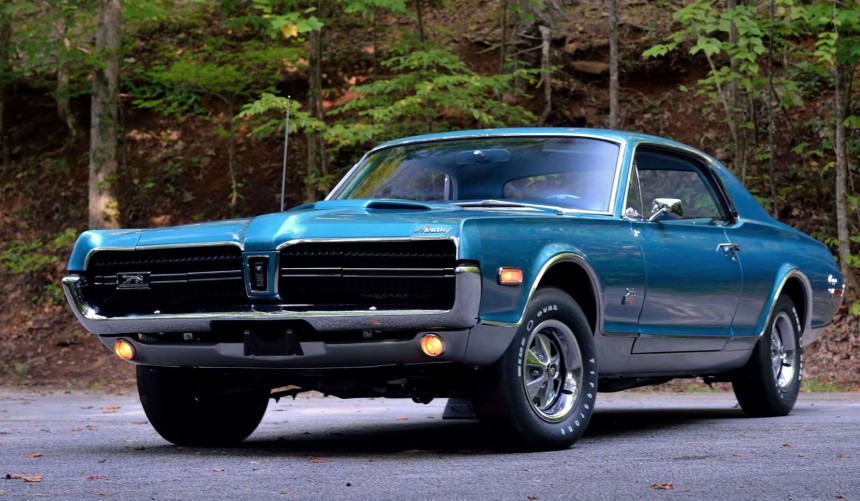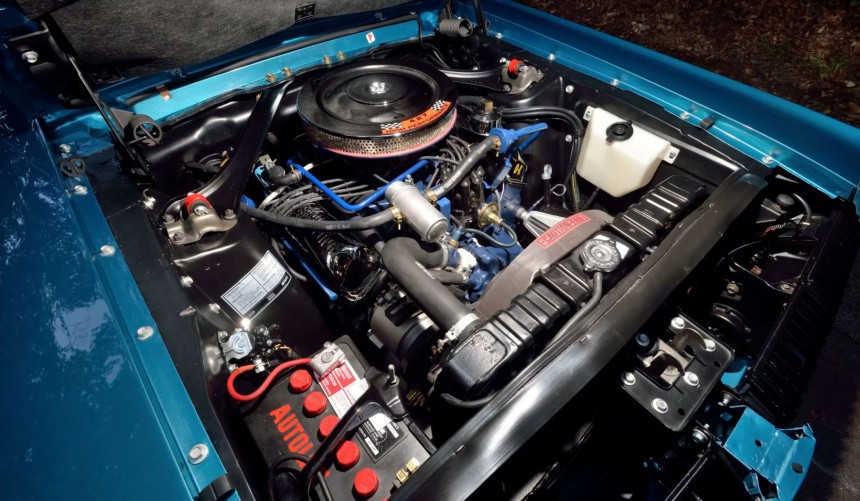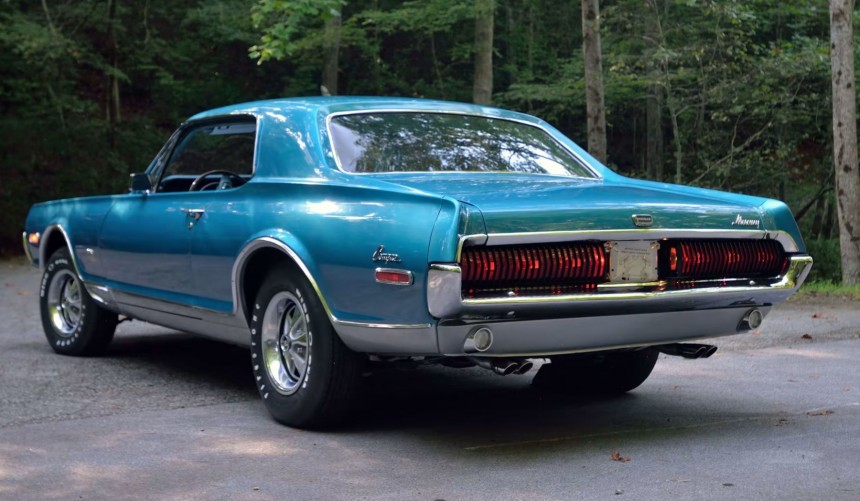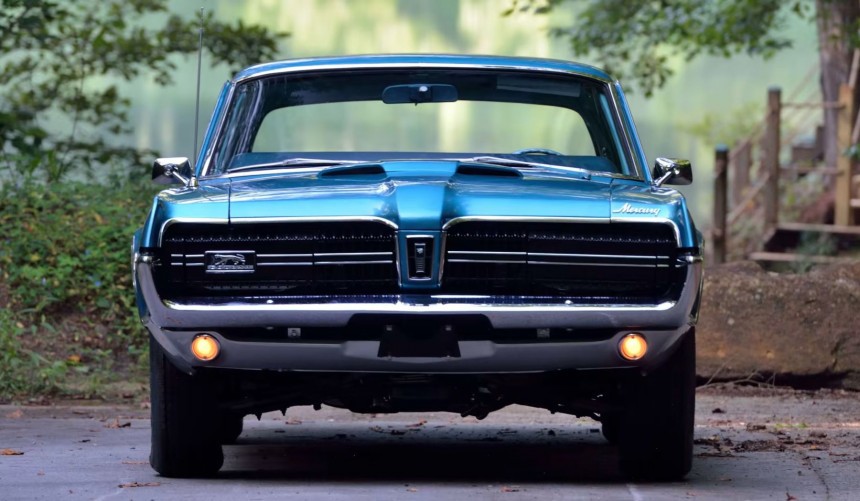In 1968, Mercury introduced the GT-E package, transforming the Cougar into one of the original muscle car era's most powerful and luxurious models.
When Ford unveiled the Mustang at the New York World's Fair in April 1964, it revolutionized the American automotive industry.
With a gorgeous, European GT-inspired design, a competitive price, and a wide range of options to choose from, the Mustang helped give birth to the pony car, a new market segment that quickly became the most popular.
The 'Stang continued to break records for passenger car sales for years, prompting Ford's Lincoln-Mercury to use the successful pony car recipe for its own model.
Heavily based on the Mustang but boasting distinct features and a more upscale vibe, the Mercury Cougar hit the streets on September 30, 1966, as a 1967 model.
Although it didn't rival its Blue Oval-badged sibling in terms of sales, the new upscale pony car was a resounding success, accounting for nearly 40% of Lincoln Mercury sales for the 1967 model year.
During its first year on the market, the Cougar was available in standard or the even more upscale XR-7 trim and carried over the entire engine lineup of the Mustang.
Both could be equipped with the GT package that - similar to the 'Stang -added visual end mechanical upgrades, including a 325-hp, 390-ci (6.4-liter) "Marauder" V8.
Since Detroit's Big Three was engaged in a horsepower war that brought ever-more powerful engines throughout most model lines, Mercury realized it needed to offer a more potent V8 for the 1968 Cougar.
That led to the mid-model year introduction of the GT-E package, which quenched buyers' thirst for performance and made the mildly redesigned 1968 Cougar worthy of rivaling Europe's most expensive grand tourers in exclusivity.
Available for both the standard and the XR-7 Cougar, the GT-E package added nearly all the optional equipment Mercury had to offer.
Mechanically, it included the Super Competition Handling Package, which meant stiffer suspension than the GT's, power front disc brakes, and a power booster engine fan.
Visually, the GT-E package added a bespoke front grille with blacked-out vertical bars, a power-dome hood with faux dual intakes, unique body side moldings, and chrome quad exhaust outlets.
Additionally, the package added an exclusive two-tone paint scheme (though buyers could still opt for a single tone) with 11 upper-body choices, "7.0-litre" badges, and bucket seats wrapped in leather and vinyl.
The package also included a so-called engine dress-up kit that replaced the standard rocker covers, radiator cap, oil filler cap, dipstick, and air filter housing with chrome versions.
But, by far, the most exciting feature of the GT-E package was the mighty 427-ci (7.0-liter) V8.
For those unfamiliar with this eight-cylinder legend, the 427 (built in various configurations) was the highest-performing member of the FE engine family.
In full race trim, it powered the Le Mans-winning GT40 Mk IIs and other competition-bred Fords.
The street-legal 427 "side oiler" (nicknamed after the oiling passage located on the lower side of the block) was at the heart of the most powerful Shelby Cobras.
Though the low-riser used in the 1968 Cougar GT-E was a milder performer than the Cobra's high-riser, it was still good enough for 390 hp and 460 lb-ft (625 Nm) of torque.
Mated to a C6 Merc-O-Matic three-speed automatic, this potent V8 made the 1968 GT-E the most powerful commercially available Cougar ever produced.
However, from May 1968 to the end of the model year, the newer 335-hp 428 Cobra Jet replaced the discontinued side oiler as the GT-E's standard engine.
Customers who wanted to get a 1968 Cougar GT-E equipped with the 427 had to pay an additional $1,311 for the privilege.
Added to either the $2,933 standard Cougar or the $3,231 XR-7, the GT-E package drove the total cost of the car to $4,244 and $4,542 (over $37,000 in today's money).
To put it into a better perspective, the GT-E package was more expensive than Mopar's HEMI engine package.
Therefore, Mercury only sold 394 GT-E Cougars and dropped the package after the model year ended. For 1969, the top-performing engine (428 Cobra Jet) was available in the new, performance-oriented Eliminator trim.
Of the 394 cats sold with the GT-E package, 357 came with the potent 427 engine.
Because few units were produced and even fewer have survived, these days, the 1968 Cougar GT-E 427 is highly sought-after.
A surviving unit in pristine shape rarely pops up at auction, but when it does, it demands six-figure bids. The Madras Blue example featured in this article sold at a Mecum auction in 2020 for $132,000.
Fifty-five years after it was unleashed on public roads, the 1968 Cougar GT-E remains one of the rarest, most potent models built during the muscle car golden age.
If you want to learn more about this legendary muscle car, we recommend watching the YouTube video below by MuscleCarOfTheWeek.
With a gorgeous, European GT-inspired design, a competitive price, and a wide range of options to choose from, the Mustang helped give birth to the pony car, a new market segment that quickly became the most popular.
The 'Stang continued to break records for passenger car sales for years, prompting Ford's Lincoln-Mercury to use the successful pony car recipe for its own model.
Heavily based on the Mustang but boasting distinct features and a more upscale vibe, the Mercury Cougar hit the streets on September 30, 1966, as a 1967 model.
Although it didn't rival its Blue Oval-badged sibling in terms of sales, the new upscale pony car was a resounding success, accounting for nearly 40% of Lincoln Mercury sales for the 1967 model year.
The need for a more menacing cat
Both could be equipped with the GT package that - similar to the 'Stang -added visual end mechanical upgrades, including a 325-hp, 390-ci (6.4-liter) "Marauder" V8.
Since Detroit's Big Three was engaged in a horsepower war that brought ever-more powerful engines throughout most model lines, Mercury realized it needed to offer a more potent V8 for the 1968 Cougar.
That led to the mid-model year introduction of the GT-E package, which quenched buyers' thirst for performance and made the mildly redesigned 1968 Cougar worthy of rivaling Europe's most expensive grand tourers in exclusivity.
The GT-E package
Mechanically, it included the Super Competition Handling Package, which meant stiffer suspension than the GT's, power front disc brakes, and a power booster engine fan.
Visually, the GT-E package added a bespoke front grille with blacked-out vertical bars, a power-dome hood with faux dual intakes, unique body side moldings, and chrome quad exhaust outlets.
Additionally, the package added an exclusive two-tone paint scheme (though buyers could still opt for a single tone) with 11 upper-body choices, "7.0-litre" badges, and bucket seats wrapped in leather and vinyl.
The package also included a so-called engine dress-up kit that replaced the standard rocker covers, radiator cap, oil filler cap, dipstick, and air filter housing with chrome versions.
But, by far, the most exciting feature of the GT-E package was the mighty 427-ci (7.0-liter) V8.
The legendary 427 side oiler
In full race trim, it powered the Le Mans-winning GT40 Mk IIs and other competition-bred Fords.
The street-legal 427 "side oiler" (nicknamed after the oiling passage located on the lower side of the block) was at the heart of the most powerful Shelby Cobras.
Though the low-riser used in the 1968 Cougar GT-E was a milder performer than the Cobra's high-riser, it was still good enough for 390 hp and 460 lb-ft (625 Nm) of torque.
Mated to a C6 Merc-O-Matic three-speed automatic, this potent V8 made the 1968 GT-E the most powerful commercially available Cougar ever produced.
However, from May 1968 to the end of the model year, the newer 335-hp 428 Cobra Jet replaced the discontinued side oiler as the GT-E's standard engine.
Luxurious, powerful, but also insanely expensive
Added to either the $2,933 standard Cougar or the $3,231 XR-7, the GT-E package drove the total cost of the car to $4,244 and $4,542 (over $37,000 in today's money).
To put it into a better perspective, the GT-E package was more expensive than Mopar's HEMI engine package.
Therefore, Mercury only sold 394 GT-E Cougars and dropped the package after the model year ended. For 1969, the top-performing engine (428 Cobra Jet) was available in the new, performance-oriented Eliminator trim.
The 427-powered Cougar GT-E 55 years later
Because few units were produced and even fewer have survived, these days, the 1968 Cougar GT-E 427 is highly sought-after.
A surviving unit in pristine shape rarely pops up at auction, but when it does, it demands six-figure bids. The Madras Blue example featured in this article sold at a Mecum auction in 2020 for $132,000.
Fifty-five years after it was unleashed on public roads, the 1968 Cougar GT-E remains one of the rarest, most potent models built during the muscle car golden age.
If you want to learn more about this legendary muscle car, we recommend watching the YouTube video below by MuscleCarOfTheWeek.
